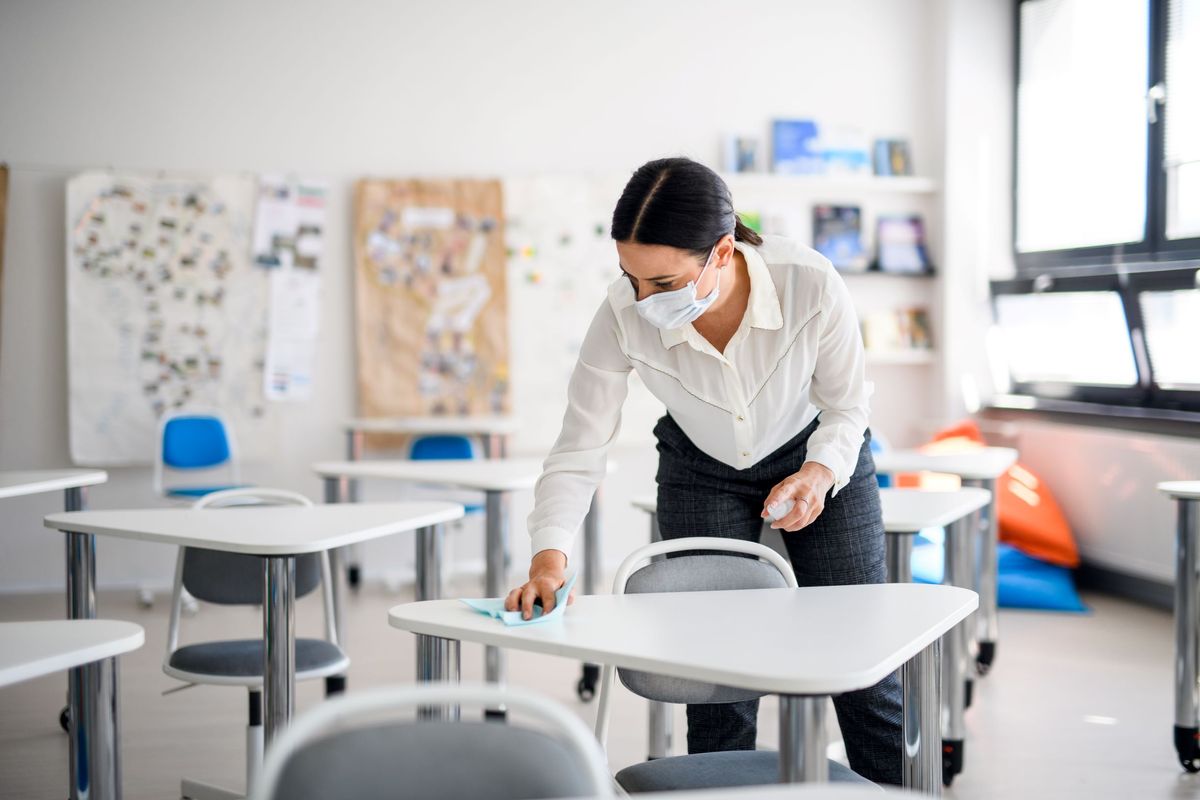
Teachers may play a bigger role in COVID-19 transmission in schools than young students do, a small new study from the Centers for Disease Control and Prevention (CDC) suggests.
In the study, the researchers investigated COVID-19 transmission in eight public elementary schools in Marietta, Georgia, a suburb of Atlanta, between Dec. 1, 2020, and Jan. 22, 2021. Overall, about 2,600 students and 700 staff were attending these six schools at the time.
During the study period, the researchers identified nine clusters of COVID-19 cases involving a total of 13 educators and 32 students at six of the elementary schools. (A cluster was defined as at least three linked cases of COVID-19.)
In four of the clusters, an educator was the "index patient," or initial case, and a student was the index patient in just one cluster. In the other four clusters, the index patient was not determined. Eight of the nine clusters involved likely transmission from educators to students.
Two of the biggest clusters involved teacher-to-teacher transmission of SARS-CoV-2, the virus that causes COVID-19, which likely happened during in-person meetings or lunch breaks. The infected teachers then transmitted the disease to multiple students. Overall, these two clusters were responsible for about half (15 out of 31) of school-associated cases in the study, not including index cases, the authors said.
Related: CDC issues new guidelines for safely reopening schools
The findings suggest that educators were "central" to COVID-19 transmission networks in schools, the authors wrote in their paper, published Monday (Feb. 22) in the CDC journal Morbidity and Mortality Weekly Report. "Initial infections among educators played a substantial role in in-school SARS-CoV-2 transmission and subsequent chains of infection … highlighting the importance of preventing infections among educators in particular," they said.
The CDC findings come a little over a week after the agency released detailed guidelines on how to safely reopen U.S. schools.
The findings also agree with those of previous studies from Europe. For example, a study in the U.K. found that educator-to-educator transmission of COVID-19 was more common in schools than student-to-student transmission, and a study from Germany found that rates of COVID-19 transmission in schools were three times higher when the index patient was a teacher compared with when the index case was a student.
Measures to prevent COVID-19 infection in teachers, including steps to minimize in-person interactions among adults at school, will likely reduce COVID-19 transmission in schools, the authors wrote. Indeed, they noted that the Georgia school district in the study has already made changes to reduce in-person interactions among educators. Vaccinating teachers can also help prevent COVID-19 spread in schools, although the authors noted that teacher vaccination is not a requirement for school reopenings.
The study also found that most cases of in-school COVID-19 transmission happened when there was "less than ideal physical distancing," meaning students and teachers were in very close proximity to each other; and students were not wearing face masks properly. This underscores the need to promote "correct mask use and physical distancing wherever possible" at schools, the authors wrote. Physical distancing is particularly important during mealtimes, when masks are not worn, they said.
Originally published on Live Science.
Health - Latest - Google News
February 23, 2021 at 04:30AM
https://ift.tt/3sgPqpW
Teachers may play a central role in spreading COVID-19 in schools, CDC says - Livescience.com
Health - Latest - Google News
https://ift.tt/2zrj9Ud
Bagikan Berita Ini














0 Response to "Teachers may play a central role in spreading COVID-19 in schools, CDC says - Livescience.com"
Post a Comment